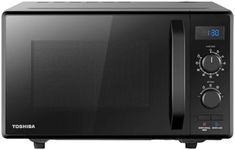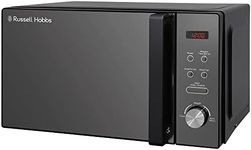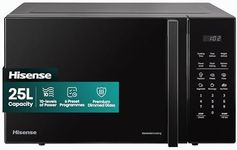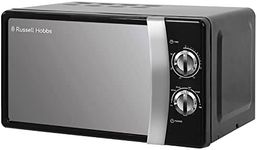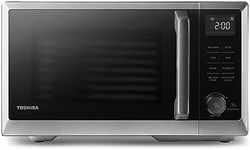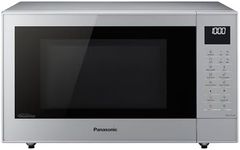Buying Guide for the Best Countertop Microwaves
When choosing a countertop microwave, it's important to consider how you plan to use it in your daily life. Whether you're reheating leftovers, defrosting meat, or cooking meals from scratch, the right microwave can make these tasks easier and more efficient. Consider the space you have available on your countertop, the types of food you typically prepare, and any special features that might enhance your cooking experience. By understanding the key specifications, you can select a microwave that best fits your needs and lifestyle.Size and CapacitySize and capacity refer to the physical dimensions of the microwave and the volume of space inside it, usually measured in cubic feet. This is important because it determines how much food you can cook at once and whether the microwave will fit in your designated space. Smaller microwaves, around 0.5 to 0.8 cubic feet, are suitable for limited counter space and simple tasks like reheating. Medium-sized models, about 0.9 to 1.3 cubic feet, offer more versatility for small families. Larger microwaves, over 1.4 cubic feet, are ideal for cooking larger meals or for households that frequently use the microwave.
WattageWattage indicates the power of the microwave, affecting how quickly and evenly it can cook food. Higher wattage means faster cooking times and more even heating. Microwaves typically range from 600 to 1200 watts. For basic tasks like reheating and defrosting, a microwave with 700 to 900 watts is sufficient. If you plan to cook more complex meals or need faster cooking times, consider a model with 1000 watts or more. Choose based on how often you use the microwave and the types of food you prepare.
Pre-programmed SettingsPre-programmed settings are preset cooking modes for specific foods like popcorn, pizza, or vegetables. These settings are important because they simplify the cooking process by automatically adjusting the time and power level for optimal results. If you frequently cook certain types of food, look for a microwave with relevant pre-programmed settings. For those who prefer manual control, fewer settings might be preferable. Consider your cooking habits and whether these features will enhance your convenience.
Turntable vs. FlatbedThe turntable is a rotating glass plate that helps distribute heat evenly, while a flatbed design uses advanced technology to achieve the same without rotation. Turntables are common and effective for most users, but they can limit the size and shape of dishes you can use. Flatbed microwaves offer more flexibility in dish size and are easier to clean, but they may come at a higher price. Choose based on your cooking needs and the types of dishes you typically use.
Control PanelThe control panel is the interface you use to operate the microwave, including buttons, dials, or touch screens. This is important for ease of use and accessibility. Simple, straightforward controls are ideal for those who want quick and easy operation, while more advanced panels with digital displays and additional features may appeal to tech-savvy users. Consider your comfort level with technology and how you prefer to interact with appliances.
Child Safety LockA child safety lock is a feature that prevents accidental operation by children, ensuring safety in households with young kids. This is crucial if you have children who might be tempted to play with the microwave. If safety is a concern, look for models with a reliable child lock feature. For households without young children, this feature may be less critical.
